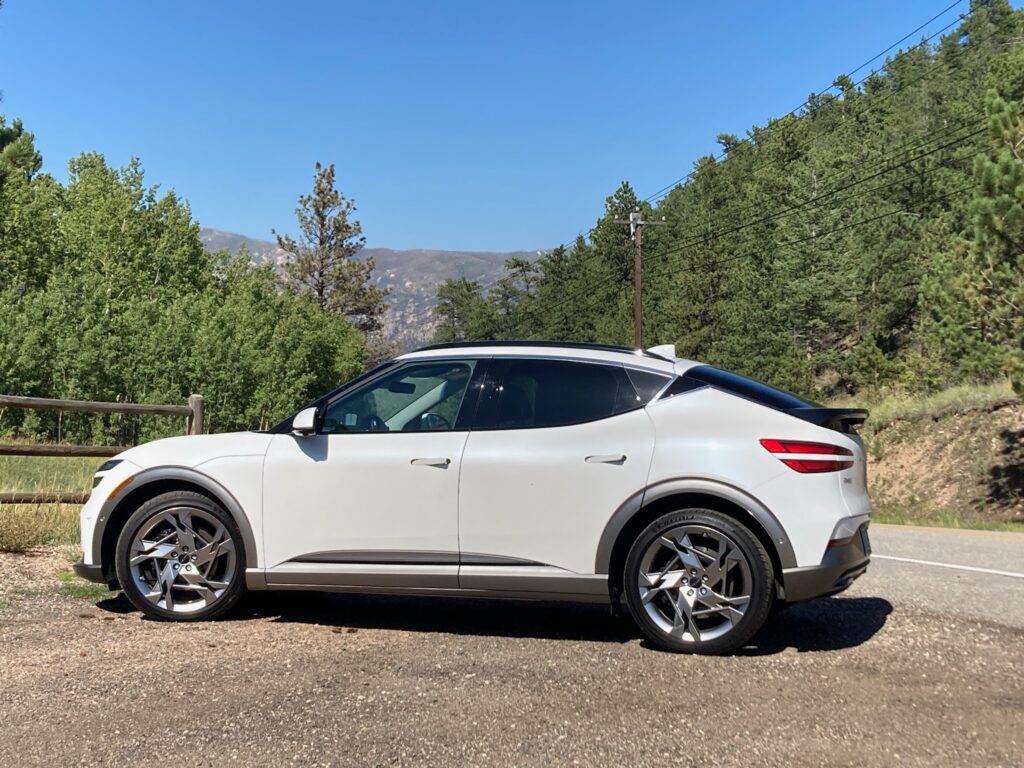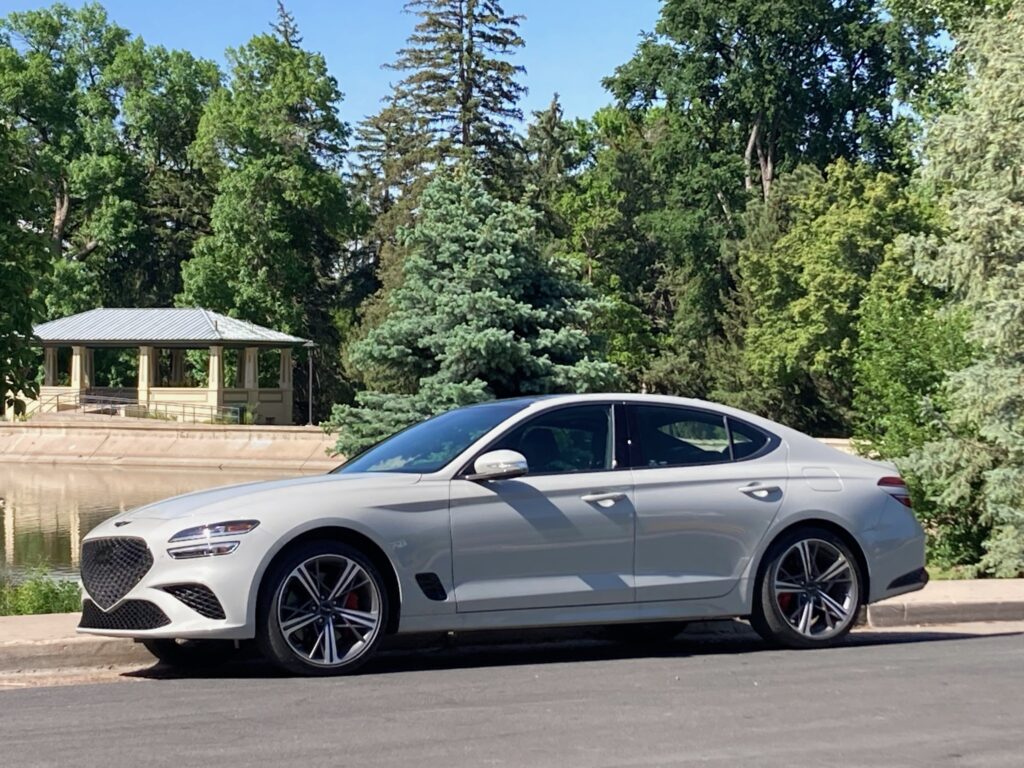
Very impressive performances were drawn the past week from the driver’s seat of the 2024 Genesis GV60 all-wheel-drive electric, a small SUV crossover, on the route toward Estes Park. As sales increase down the road among the electric models, the GV60 will compete with the Ford Mustang Mach-e, Audi Q4 e-tron, Volvo XC40 Recharge and several others.
The GV60 is the future; on the road three months earlier it was an “end of the line” review aboard the Genesis G70 in our annual Memorial Day weekend swing through Wray and Sterling, as I was informed that production of that particular model was being discontinued as of that day at Ulsan, Korea.
In regard to the sporty GV60 electric, a highlight was use of the Genesis’ Boost button when coming out of the second switchback on the Devil’s Gulch Road before reaching Estes Park. I’ve written many times of these switchbacks. That second switchback is so tight, and steep, drivers more often than not seek the lowest and slowest gear in order to make the turn while climbing on the upward right-side lane opposite those motorists coming down with so much more force and speed.
And when you accomplish the turn back to the west at slow pace and face 80 yards of sharply rising straightaway grade, that’s when the Boost button came through the most satisfactorily of any I’ve ever tested. The Boost button is on the steering wheel; when pushed, it instantly lends the dual electric powertrain a 10-second jump of horsepower to 483 from a normal 429. I appreciated one of the smoothest, quickest accelerations ever, up and over the hill to Estes.
I face the switchbacks often, as I opt for the Devil’s Gulch roadway through Glen Haven from Drake, instead of sticking to the U.S. 34 route.
The GV60 is equipped with a 72.4 kWh battery, which can be charged overnight with the level-2 charger in my garage to a range of 262 miles. The drive to Estes and back, plus some in-town maneuvers reduced the battery by 45 percent, or 115 miles. Its front and rear electric motors are of 160 kW each. MPG-e rating for the GV60 is 97 city and 82 highway (90 combined)
Beneath the hood up front is a small storage area and at the rear is a power liftgate for accessing cargo space. It rides on 21-inch wheels with Michelin tires.
Nappa leather seats, blue in color, are heated and ventilated in front, heated in the rear, with a heated steering wheel, too. A floating center stack opens up space at the floor; it also features a crystal sphere shifter that rotates when the car is started.
Sitting side-by-side at the dashboard are 12.3-inch digital instrument cluster and same-size infotainment center, including navigation, Bang & Olufsen audio.
The Genesis GV60 Performance trim carried sticker price of $71,320; the cheaper Advanced all-wheel-drive model begins at $61,745. The GV60s are built in Ulsan, Korea, in the same factory which is shutting down production of the Genesis G70.
The end of the line for the G70 is reportedly to enable further electrification of the Genesis brand, such as the GV60. Genesis is the luxury manufacturing division of the Hyundai Motor Group. I was driving the G70 sport sedan in order to test its 300-horsepower, turbocharged 2.5-liter inline 4-cylinder, which replaced a 3.3-liter, twinturbo V-6 from the last G70 I drove a couple years ago. The 2.5 engine was borrowed from the Kia Stinger, which has also been discontinued. The Genesis G70 is a dressed-up version of the Stinger.
The G70 performance was good, with quick steering, strong acceleration, standard Brembo brakes and overall fuel mileage of 27.3 for the 450 miles of travel. Its red brake calipers go well with the stylish sedan’s low-profile Michelins on 19-inch sport alloy wheels. Inside, the seats are attractive with quilted Nappa leather, double-stitched at the seams, and the Lexicon premium audio was of pleasant sound. Legroom is tight in the rearseating area and trunk space is only 10.5 cubic feet.
A stop at The Orphanage in Yuma put us in touch with Richard Birnie, who, along with Ron Wenger, oversees the automotive-themed gallery, which also displays works of local and regional artists. Featured for a short while among the vintage cars is a 1929 Stutz Model M Cabriolet, used by owner Norman Campbell Chambers in Europe in 1940 to avoid detention in Spain by the German army. The assessment of hail damage to his building required Birnie’s attention the afternoon we stopped; a similar situation existed at Wray with Bonanza Ford, which reported hail damage to 40 automobiles.
Later in the Memorial Day’s long weekend, a day after a high school graduation party for Claire Lindenmayer and Lenna Martinez, we drove the G70 to The Cowboy Church at Johnstown for the wedding of Carol Jean Archer and Harold Kent Sundling, a fellow automotive reviewer specializing in trucks and trailers. During the reception at the Johnstown YMCA, we enjoyed a visit with Sundling’s older brother, Roland, who retold the “surreal” exodus of the Pentagon after it was struck by the hijacked airliner on Sept. 11, 2001.
The brief production of the Genesis G70 began in 2017. The model we drove last week, the 2.5T, was sticker-priced at $49,050.

